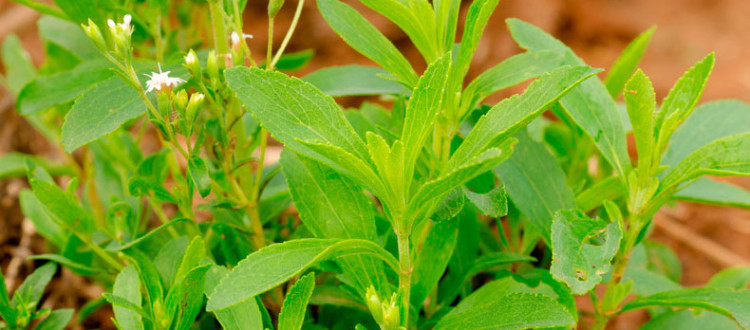Stevia
Stevia (Stevia rebaudiana) is a perennial plant native to Paraguay and Brazil, and is a member of the sunflower (Asteraceae) family. Stevia is widely known for its sweet leaves which serve as the basis for a commercially produced sugar substitute by the same name. Its active ingredient, steviol glycosides, are up to 300% sweeter than sugar, and can be eaten fresh or used in sweetening tea and other drinks. Similar varieties are native to the American southwest, but they lack the sweetness that their South American cousins contain.
Stevia is a perennial plant that grows into a shrub in warmer climates, Zone 9 and higher, and is grown as an annual in areas of the country with cold winters. Although it tends to thrive in high heat and humidity, Stevia cannot tolerate too much water, or “wet feet” as many gardeners would call it. Stevia plants can reach a height of 2 to 4 feet, and the leaves are long and slender. Plant is a sunny area in sandy loam or loamy soil containing lots of organic matter.
How to Plant
Since stevia is averse to cold, be certain the danger of frost has passed before planting stevia in your garden. Stevia starts should be planted between 10 to 12 inches apart. Be sure to prepare the site with finished compost worked into the soil to ensure good drainage and an optimal growing medium. Light but frequent watering is recommended until the plant becomes established, taking care not to over-water.
Stevia has a shallow root system, so to help prevent them from drying out too quickly, top dress the area around the plant with mulch or compost to protect the roots.
Fertilizing
The use of finished compost will deliver most of the nutrients required by stevia. Make certain your compost is from a knowledgeable and established compost producer. Immature or poorly prepared compost can bring unwanted weeds into your garden or growing container, and in some cases can damage your plant.
Stevia responds well to fertilizers with a lower nitrogen content than phosphorus or potassium. The use of organic fertilizers is recommended due to the slow release nature of nitrogen.
Recommendations for Use
- A few fresh stevia and mint leaves make a refreshing herbal tea when steeped in a cup of boiling water.
- Add fresh stevia leaves to beverages or foods as a sweet, edible garnish.

